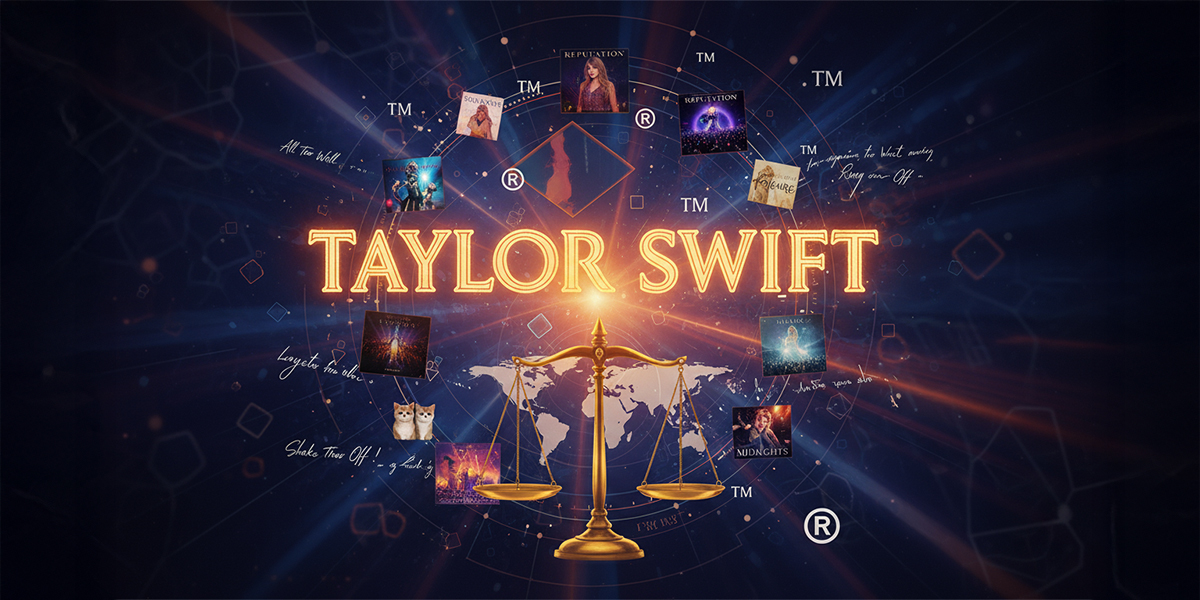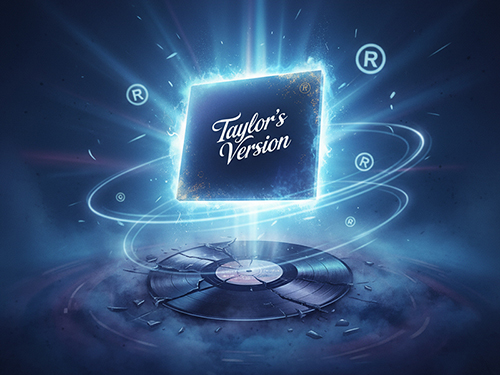Taylor Swift’s Trademark Strategy: A Masterclass in Brand & IP Protection

When you think of Taylor Swift, you may think of chart-topping albums, record-breaking tours, or her devoted fanbase, the “Swifties.” But behind the music lies a sophisticated intellectual property (IP) strategy that has made her not only one of the most powerful artists in the world but also a case study in how to build, protect, and monetize a brand.
For entrepreneurs, startups, and creators, her playbook offers valuable insights into the importance of trademarks, brand control, and strategic IP management.
How Many Trademarks Does Taylor Swift Own?

Through her company, TAS Rights Management, LLC, Taylor Swift has filed over 300 trademark applications in the US and more than 400 trademarks globally across 16 jurisdictions (via WIPO’s Global Brand Database).
These registrations cover:
- Her name (“Taylor Swift”)
- Album titles (Reputation, Lover, Evermore, Midnights, Fearless (Taylor’s Version), and her latest, The Life of a Showgirl)
- Tour names (The Eras Tour, 1989 World Tour)
- Famous lyrics and catchphrases (“This Sick Beat”, “The Old Taylor Can’t Come to the Phone Right Now”)
- Fanbase name (“Swifties”)
- Merchandise & apps (Taymoji, drinkware, cosmetics)
- Even her cats’ names (Meredith, Olivia & Benjamin Swift)
- This is not just about legal paperwork. Each trademark strengthens her identity, authenticity, and revenue streams.
Why Trademarks Matter in Creative & Business Ventures
Taylor Swift’s IP strategy shows us that trademarks are more than legal protection – they’re business tools:
Ownership of Identity – By trademarking her name and works, she prevents unauthorized use and keeps full control over how her brand is presented.
Merchandising Power – The Eras Tour generated USD 440.8 million in merchandise sales alone, partly because every product was trademark-backed and official.
Global Reach – Using WIPO’s Madrid System, she extends US-based trademarks internationally, ensuring her albums, tours, and brands are consistently protected worldwide.
Future-Proofing – By trademarking phrases and album titles early, she ensures long-term leverage in new industries (apps, cosmetics, lifestyle).

Lessons from the Evermore Case

Even a strong strategy faces challenges. In 2021, Evermore Park, a fantasy attraction, sued Swift over her album title Evermore. Her team countered with evidence that the park had used her songs without authorization. Both sides dropped their claims – a reminder that litigation is possible, but smart negotiation often wins.
Reclaiming Control with “Taylor’s Version”
- Perhaps Swift’s most groundbreaking move was re-recording her old albums after losing her master recordings. By filing fresh trademarks like Fearless (Taylor’s Version) and Red (Taylor’s Version), she:
- Legally distinguished her new work from old label-controlled versions.
- Directed fan support toward her versions.
- Set an industry precedent: trademarks can be a tool of empowerment, not just protection.

What Businesses Can Learn from Taylor Swift

Taylor Swift’s strategy isn’t just for music icons – any business, startup, or creator can apply these lessons:
Trademark early, trademark smart – Protect your brand name, product names, and unique catchphrases before they gain value.
Think global – Use international systems like WIPO’s Madrid System if you plan to expand beyond borders.
Diversify protection – Cover not just your main product, but merchandise, digital platforms, and fan/community names.
Use IP as leverage – Just like Swift reclaimed her master’s; IP can give you negotiation power in partnerships and disputes.
Build brand consistency – Every trademark reinforces authenticity and prevents market dilution.
Final Note
Taylor Swift’s trademark empire demonstrates that creativity and legal strategy can coexist beautifully. She has turned lyrics, tours, and even her pets into assets – not by accident, but through deliberate IP planning.
For businesses and creators, the takeaway is clear: your brand is your most valuable asset. Protect it, expand it, and manage it strategically.





Leave a Reply